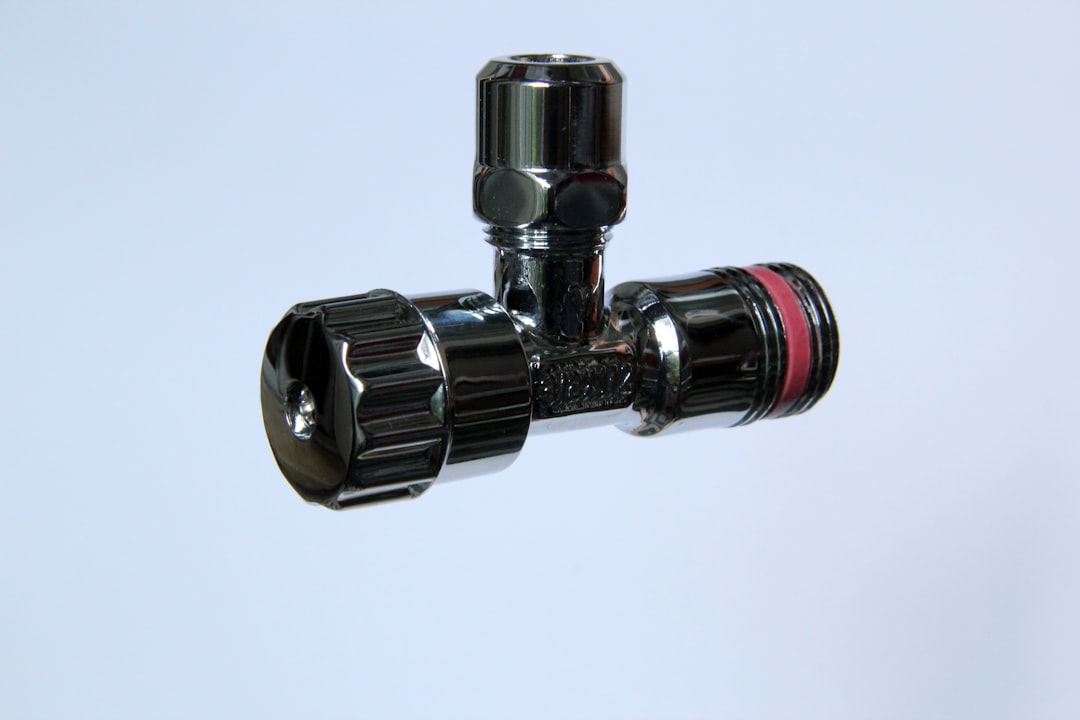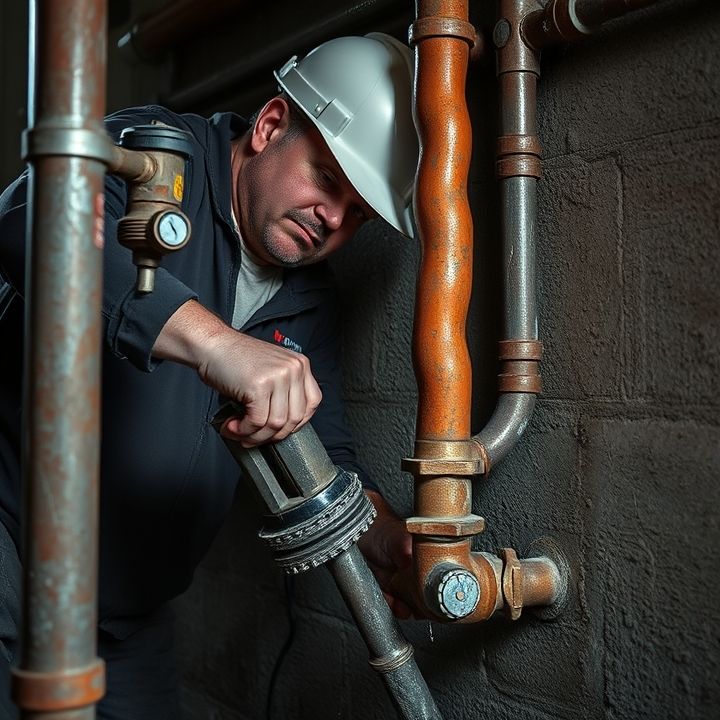Table of Contents
- Introduction
- Identify the type of plumbing emergency you are facing
- Shut off the main water supply to prevent further damage
- Use basic tools for temporary fixes, such as a wrench or plunger
- Contact a professional plumbing emergency service for immediate assistance
- Conduct initial assessments like leak detection and water heater failure signs
- Prepare for the plumber’s arrival by clearing the area and gathering information
- Inquire about plumbing repair costs and time estimates before agreeing to services
- Follow up with maintenance tips to prevent future plumbing emergencies
- Conclusion
- Frequently Asked Questions
Introduction
When a plumbing emergency strikes, time is of the essence. Whether it’s a burst pipe flooding your living room or a stubborn drain that just won’t budge, knowing the right steps to take can mean the difference between a minor inconvenience and a full-blown disaster. With the chaos of water gushing around your feet, it’s easy to feel overwhelmed, but fear not! This quick guide will arm you with essential strategies to tackle those plumbing crises like a pro.
From turning off the water supply to assessing the damage, we’ll walk you through the actionable steps that can save your home from water-related havoc. You’ll also discover the tools you may need to have on hand for emergencies and when to call in the professionals. So grab your toolbox and let’s dive in—because being prepared is the best defense against plumbing catastrophes!
Identify the type of plumbing emergency you are facing
When faced with a plumbing emergency, the first step is to identify the type of issue you are encountering. Plumbing emergencies can range from minor leaks to significant floods, each requiring a different approach. Common types of emergencies include burst pipes, which can cause extensive water damage, and clogged drains, leading to backups that can affect multiple fixtures.
Another common issue is toilet malfunctions, which can be frustrating and urgent if the toilet is overflowing. Water heater issues, such as leaks or temperature problems, can also warrant immediate attention.
Remember that sewage backups are especially serious and can pose health risks, necessitating prompt action. Understanding the specifics of your situation can help you communicate effectively with a plumber when seeking assistance.
Assess the severity of the problem and take note of any visible damage or shut-off valves you can access. This information is crucial for determining the next steps to take and whether you can tackle the issue on your own or if professional help is required.
Shut off the main water supply to prevent further damage
In the event of a plumbing emergency, one of the most critical steps you can take is to shut off the main water supply. This action is essential to prevent further damage to your property, especially if you are experiencing a significant leak or a burst pipe. The main water shut-off valve is usually located near the perimeter of your home, often in areas like the basement, crawl space, or near the water heater.
To locate the valve, look for a round wheel or lever that controls the water flow into your home. Turning this valve clockwise will typically shut off the water supply. If you have difficulty finding it, consider checking your home’s plumbing documentation or consulting a professional. Once the water supply is off, relief from continuing flooding will enable you to assess the situation more effectively and communicate accurately with a plumber when they arrive. Additionally, it’s important to inform all household members of the valve’s location and operational instructions to ensure swift action can be taken in future emergencies.
Use basic tools for temporary fixes, such as a wrench or plunger
In the event of a plumbing emergency, using basic tools can provide temporary fixes to alleviate immediate issues. A wrench is an essential tool for tightening or loosening nuts and bolts, especially for leaking pipes or fixtures. This tool can help you stop leaks by securely fastening connections. On the other hand, a plunger is particularly effective for clearing clogged drains and toilets. By creating a vacuum seal, plungers can dislodge blockages and restore normal flow. It’s important to use these tools correctly; for example, when using a plunger, ensure there’s enough water in the bowl to cover the rubber cup. Additionally, if you encounter a more significant issue, such as a burst pipe, having a bucket on hand to catch any leaking water can prevent further damage. Always remember to shut off the water supply to minimize the impact of any plumbing problem. While these tools can provide temporary relief, it is advisable to contact a professional plumber for a permanent solution.
Contact a professional plumbing emergency service for immediate assistance
In the event of a plumbing emergency, the most critical step you can take is to contact a professional plumbing emergency service for immediate assistance. Time is of the essence when it comes to plumbing issues such as burst pipes, severe leaks, or overflowing toilets, as these problems can cause extensive damage to your property if not addressed quickly. Professional plumbers are trained to assess and resolve various plumbing emergencies efficiently.
Emergency plumbing services are available 24/7, providing you with the peace of mind that help can arrive at any hour. When you call a professional, be prepared to describe your situation clearly, including any visible damage or leaks. This information will allow the plumber to arrive equipped with the necessary tools and parts to address the issue promptly.
Attempting to fix a plumbing emergency without the right expertise can lead to further complications or even more significant damage. Therefore, it is always best to rely on qualified professionals who have the experience and knowledge to handle emergencies safely and effectively.
Conduct initial assessments like leak detection and water heater failure signs
In a plumbing emergency, conducting initial assessments is crucial to determine the extent of the problem and what steps to take next. Start by checking for visible leaks around faucets, pipes, and fixtures. Look for water pooling on the floor or damp spots on walls and ceilings, which can indicate hidden leaks. If you notice any of these signs, it is essential to address the issue promptly to prevent further damage.
Next, pay attention to your water heater. Look for signs of failure such as irregular water temperatures, unusual noises like popping or rumbling, and leaks around the base. These can be indicators that your water heater is malfunctioning and may need immediate attention.
Additionally, check for discolored or cloudy water, which can signal sediment buildup or corrosion in the pipes. By identifying these signs early, you can mitigate damage and take the necessary precautions while awaiting professional help. Remember, acting quickly can often prevent a plumbing emergency from escalating into a more significant issue.
Prepare for the plumber’s arrival by clearing the area and gathering information
When faced with a plumbing emergency, your first step should be to prepare for the plumber’s arrival. Begin by clearing the area around the plumbing issue to provide easy access for the plumber. This may involve moving furniture, pets, and any obstructions that could hinder their work. Ensure that the floor is dry and safe, as slipping hazards can complicate the situation and pose risks.
In addition to clearing the area, gather as much information as possible about the plumbing problem. Document the symptoms you have observed, such as leaks, unusual sounds, or changes in water pressure. If applicable, take note of when the issue began and any actions you have taken to address it. Having this information ready will help the plumber diagnose the issue more efficiently.
Lastly, identify the location of your main water shut-off valve and any relevant fixtures, which can expedite the repair process. Being organized and informed can significantly enhance the effectiveness of the plumber’s visit, ensuring that the problem is resolved with minimal disruption.
Inquire about plumbing repair costs and time estimates before agreeing to services
In any plumbing emergency, it is crucial to inquire about repair costs and time estimates before agreeing to any services. Understanding the financial implications and the expected timeline can help you make informed decisions in a stressful situation. When a plumber arrives, ask for a clear breakdown of the costs involved. This should include parts, labor, and any additional fees that may apply.
In addition to costs, inquire about how long the repairs are expected to take. Knowing the estimated time can help you plan your day and manage any disruptions the repair may cause. Remember that some issues may require more extensive work than initially apparent, so it’s beneficial to ask for a thorough assessment.
Furthermore, when discussing costs, always ask if there are options for payment plans or financial assistance, especially if the repair is extensive. By gathering this information upfront, you can avoid unpleasant surprises and ensure that you are choosing the right service that fits both your budget and timeline.
Follow up with maintenance tips to prevent future plumbing emergencies
Maintaining your plumbing system is crucial to prevent emergencies in the future. Regular inspections and maintenance can help catch potential problems early. Firstly, check for leaks under sinks and around toilets; even small leaks can indicate larger issues if left unaddressed.
Secondly, ensure that drains are clear of debris by using strainers and regularly cleaning them to avoid clogs. Additionally, avoid pouring grease or food scraps down the kitchen sink, as these can lead to significant blockages over time.
Another important tip is to be mindful of what you flush down the toilet. Only human waste and toilet paper should be disposed of in toilets; items like wipes, feminine hygiene products, and dental floss can cause serious clogs.
Lastly, consider winterizing your plumbing system by insulating pipes, especially those in unheated areas, to prevent them from freezing during cold weather. These proactive measures can help maintain a functional plumbing system and significantly reduce the chances of future emergencies.
Conclusion
In conclusion, facing a plumbing emergency can be stressful, but knowing the essential steps to take can significantly minimize damage and ensure a swift resolution. Start by identifying the type of issue, shutting off the main water supply, and utilizing basic tools for temporary fixes. Contacting a professional plumbing emergency service is crucial as they can address urgent problems effectively and safely. Remember to prepare for their arrival by clearing the area and gathering relevant information about the situation. Following up with maintenance tips can also help prevent future emergencies. If you’re experiencing a plumbing crisis right now, don’t hesitate to take action. Call 573-555-2121 to get expert plumbing assistance immediately. The sooner you reach out, the quicker we can help you restore your plumbing system to normal.

